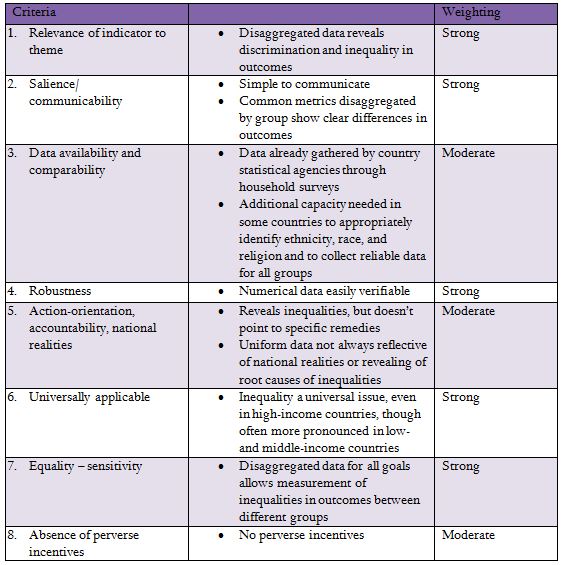Post-2015 Development Issues: Discrimination and Inequality

More on:
Development scholars and practitioners agree that discrimination and inequality undermine the most basic principles of human rights and socioeconomic development. Inequity and lack of opportunity harm both marginalized individuals—the very poorest, who should be the primary beneficiaries of development—as well as society at large. For example, according to the UN, the Asia Pacific region is losing $42 to $47 billion per year because of restrictions on women’s access to employment opportunities, and another $16 to $30 billion per year because of gender gaps in education.
A clearer focus on combating discrimination and inequality in the post-2015 development framework would help ensure that the most marginalized and vulnerable groups are not left out and left behind in the pursuit of macroeconomic growth. This is a real danger, and one that requires the vigorous attention of the global community.
The goal of equal opportunity is universally applicable to rich, poor, and middle-income countries alike, and should be mainstreamed throughout all development goals.
To create real accountability for combating discrimination and inequality, data for all indicators and targets, for all post-2015 development goals, must be disaggregated by gender, ethnicity, race, and religion. Only data disaggregation can ensure that growing disparities and inequities are not masked by aggregate numbers that obscure the real situation of the worst off.
Much of this data already exists, gathered by country statistical agencies through household surveys. However, additional support will be needed for some countries to improve their data collection methods and capacity.
See below for a summary of how disaggregating all targets and indicators by race, ethnicity, religion, and gender meets the key selection criteria for global development indicators.

The next post in this series will explore the proposed goal of open and accountable government for all and what that could mean for international development. Previous posts in the series can be found here, here, and here.
More on:
 Online Store
Online Store